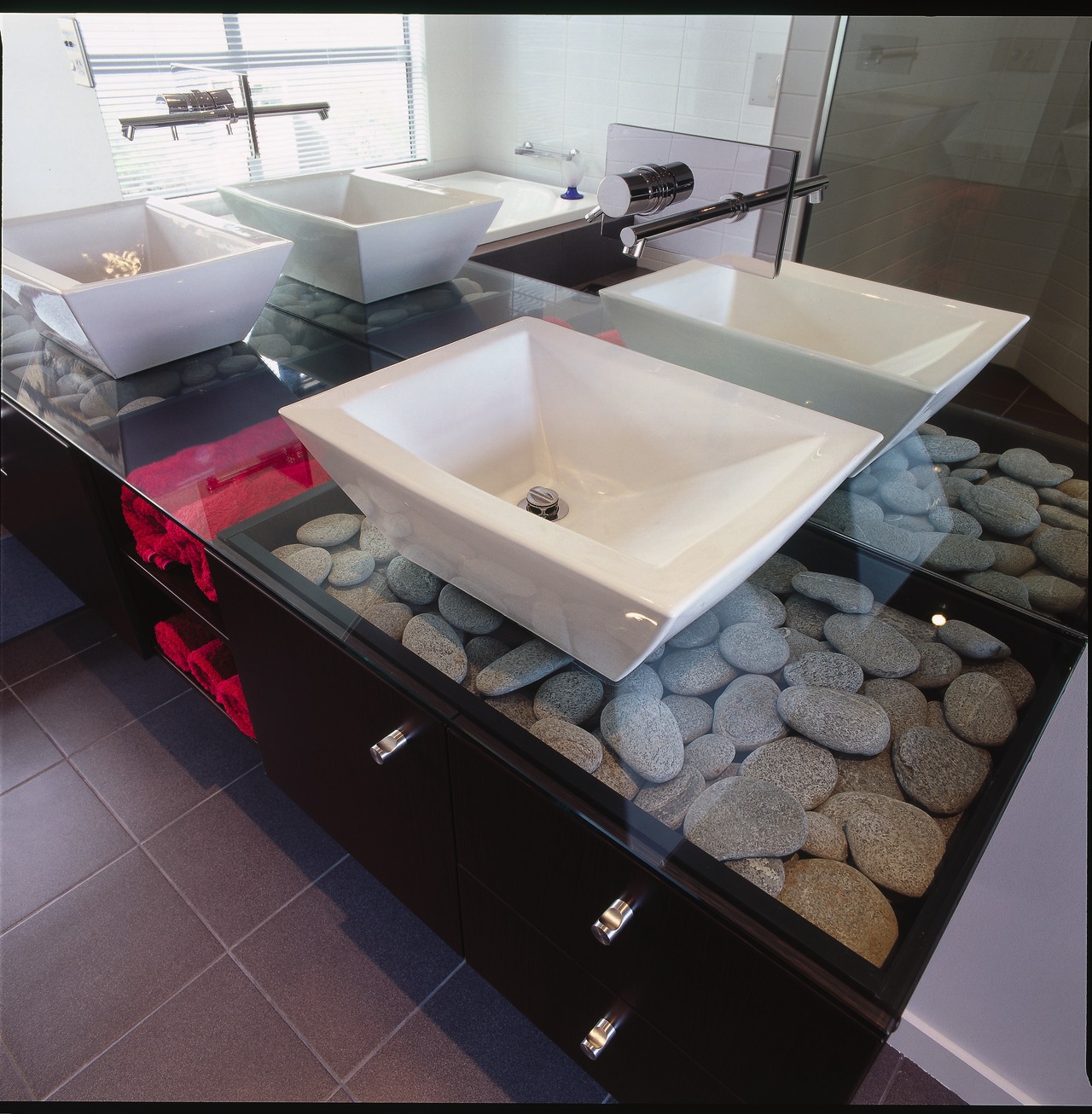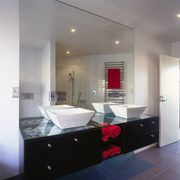Making a splash
Your bathroom should provide plenty of hot water without wasting water or energy
Hot water heating can account for up to 45% of your energy bill. So when you're building or renovating your bathroom, think carefully about how you choose to heat your water. A little research now can prove invaluable, both in terms of how much hot water you have to use and how much it will cost you over time.
If you're a fan of long hot showers, or there are a lot of people in your household, a gas continuous-flow hot water system is an ideal choice. It provides an unlimited supply of hot water and no energy is wasted storing hot water unnecessarily. It only heats the water as you need it, says Georg Neudecker, business manager - gas for Auckland's gas network company, Vector.
Adding digital remote controllers to a continuous-flow system will allow you to select the exact water temperature you require. Some systems allow up to four controllers, enabling you to select different water temperatures for the kitchen, bathroom and laundry.
"A highly efficient alternative to the traditional electric hot water cylinder is a gas-heated hot water storage cylinder. They provide faster recovery times and economical hot water heating," says Neudecker.
Gas water heaters can be run off the natural gas network or with LPG bottles. Externally fitted gas continuous-flow systems or storage cylinders are a sensible option if space inside the house is at a premium.
One of the most energy-efficient methods of heating your water is by heat-pump, which provides up to 3.25 units of heating for each unit of electricity consumed. A heat pump extracts warmth from the air, even when it seems cold outside, and transfers it to the water in your cylinder.
Another highly efficient water heating option is solar, says Robert Tromop, manager of monitoring and technical at the Energy Efficiency and Conservation Authority (EECA). Modern solar panels are streamlined and can be glazed into the roof line which make them virtually invisible.
"Solar can reduce your water heating requirements by around 50%, which means savings on your water heating bill," says Tromop.
Solar systems are designed to complement electricity or gas water heating. When the sun is not around, the solar system automatically switches your water heating to electricity or gas so you'll never go without hot water.
Talk to your plumber about solar options and visit www.solarsmarter.org.nz for more information.
Further energy savings can be made in the bathroom by ensuring your hot water cylinder and pipes are well insulated. You can also reduce the amount of water you use by choosing low-flow fittings, says Rachel Hargreaves, sustainability building scientist for the Building Research Association of New Zealand (BRANZ Ltd).
"Low-flow tapware and showerheads deliver a lot less water than regular fittings. And, with mains systems, the pressure is not affected you'll barely notice the difference," says Hargreaves.
There is plenty of low-flow tapware to choose from, including European-designed products.
Using less water is good for the environment as well as your water bill, so Hargreaves also recommends you choose a dual flush toilet which gives you the option of a half flush.
When constructing your bathroom, ensure you use bathroom-specific building materials to prevent mould and rot, says Allen Davison, senior policy analyst at EECA.
"Install an extractor fan to reduce dampness and ensure that the steam is vented outside and not into the ceiling cavity," says Davison.
"It's a good idea to have the extractor fan connected to the light switch with a delay timer so you never forget to use it, and so it continues to extract steam for 10 to 15 minutes after you've left the bathroom," he says.
He also recommends talking to your electrician about putting a timer on your heated towel rail too as you only need it on for a few hours a day.
The bathroom can unnecessarily waste a lot of energy, but a few good decisions will mean you'll have plenty of hot water and a smaller energy bill. And you'll also be helping lessen greenhouse gas emissions.
Visit www.theenergywebsite.com to learn more about making your home energy efficient.
Credit list
Main Contractor
Water heater
Vanity
Basins
Story by: Trendsideas
Home kitchen bathroom commercial design
Colourful and casual
Underpinning the artistic
Connected to the ocean









